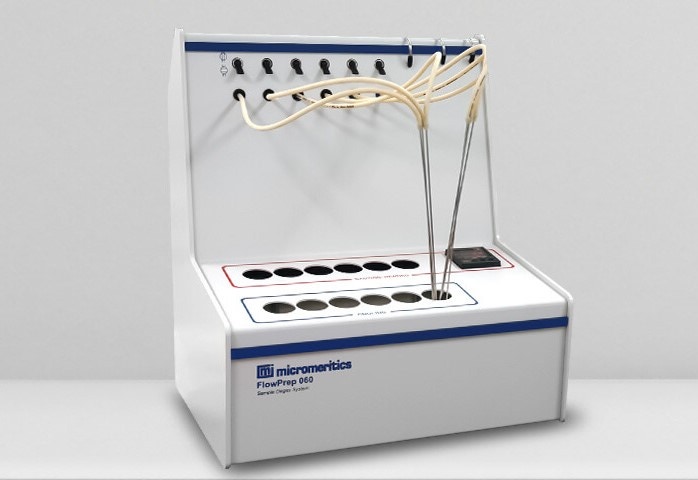
FlowPrep
The Micromeritics FlowPrep lets you choose the most suitable gas, temperature, and flow rate for your application and sample material.
Academia Grant Program: dollar-for-dollar and up to $30K grants for our flagship instruments. Apply by December 15, 2025. Apply now
Apply now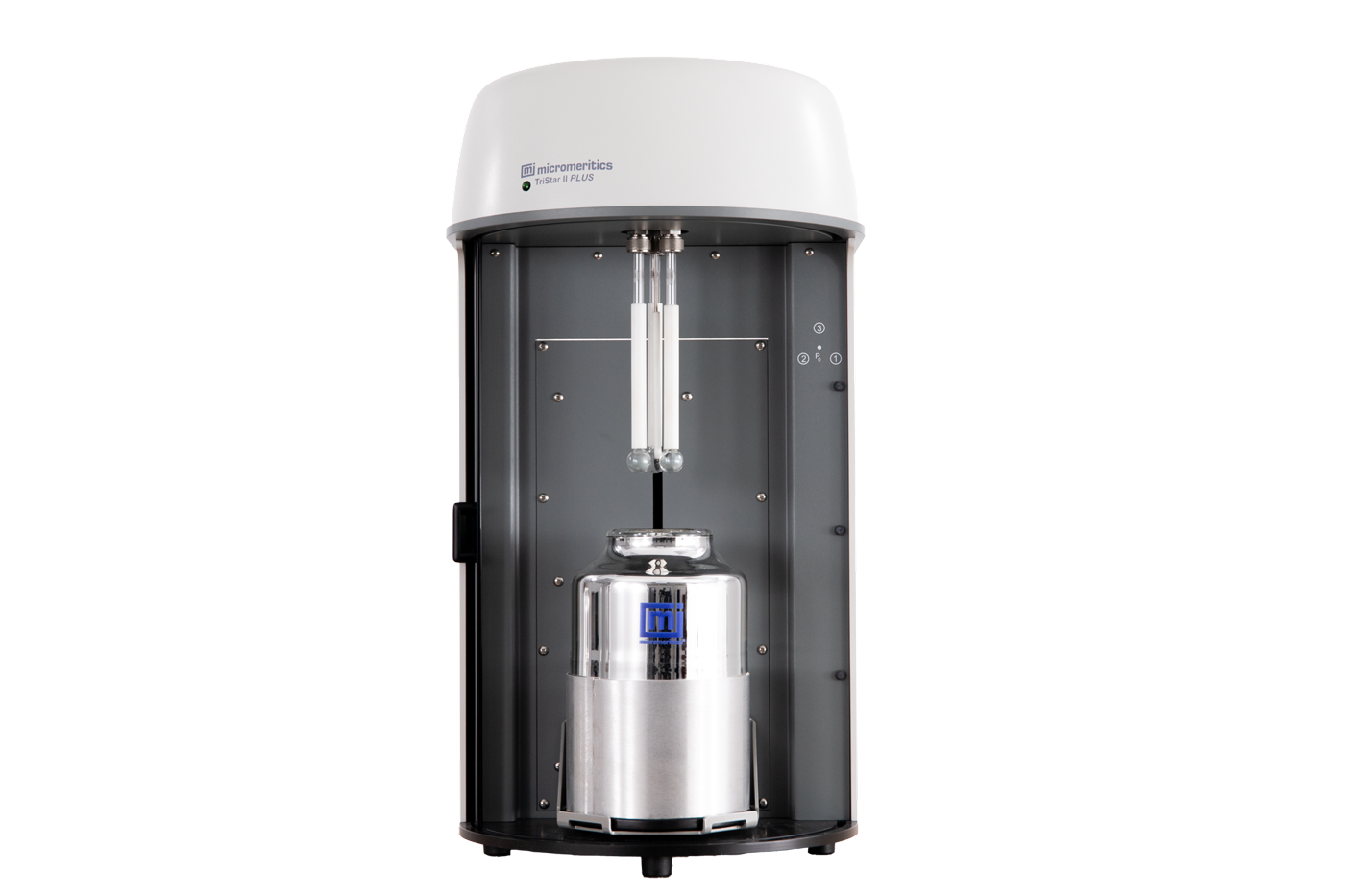




The Micromeritics TriStar II Plus is a fully automated BET surface area analyzer designed for rapid, high-throughput analysis with high accuracy.
Its three-station design increases the speed and efficiency of routine quality control while maintaining the accuracy, resolution, and data reduction capabilities needed for research applications.
With versatile analysis methods and advanced data reduction, the TriStar II Plus adapts to meet specific application requirements.
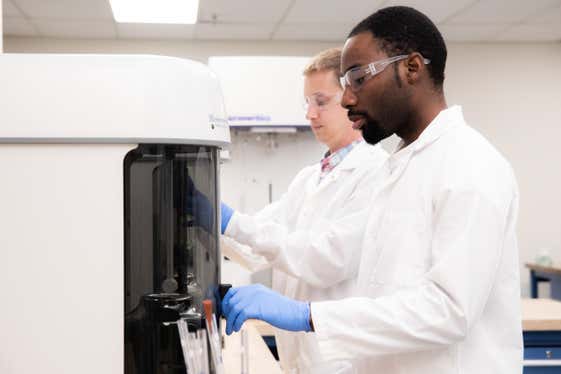
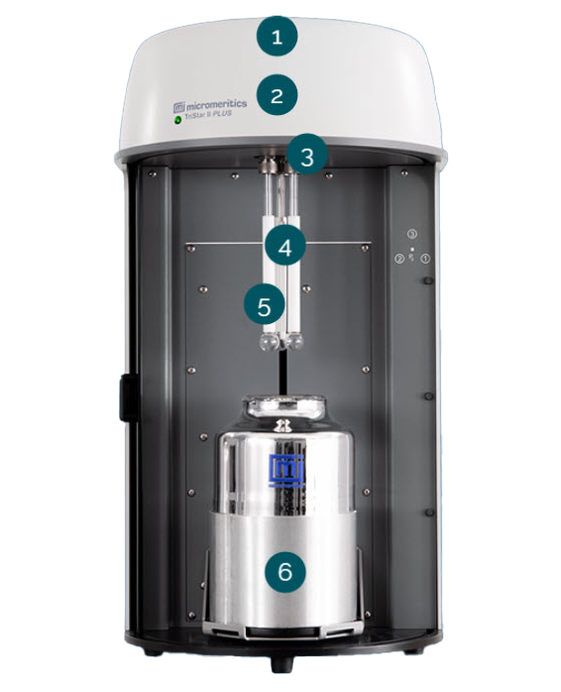
Surface area is a critical tool in investigating the kinetics of the sintering process and product properties. Particles having rough surfaces or internal porosity will generally exhibit higher specific surface areas. Therefore, surface area indicates the amount of sample surface available to react with other component particles and /or the surrounding environment.
The wear lifetime, traction, and performance of tires are related to the surface area of carbon blacks used in their production. Medical Implants Controlling the porosity of artificial bone allows it to imitate real bone that the body will accept and allow tissue to be grown around it.
Knowledge of surface area, total pore volume, and pore size distribution is important for quality control of industrial adsorbents and in the development of separation processes. Surface area and porosity characteristics affect the selectivity of an adsorbent.
The active surface area and pore structure of catalysts influence production rates. Limiting the pore size allows only molecules of desired sizes to enter and exit, creating a selective catalyst that will produce primarily the desired product.
Nanotube surface area and micro porosity are used to predict the capacity of a material to store hydrogen.
Surface area and porosity must be optimized within narrow ranges to accomplish gasoline vapor recovery in automobiles, solvent recovery in painting operations, or pollution controls in wastewater management.
Surface area and porosity affect the curing and bonding of greenware and influence strength, texture, appearance, and density of finished goods. The surface area of glazes and glass frits affects shrinkage, crazing, and crawling.
The surface area of a pigment or filler influences the gloss, texture, color, color saturation, brightness, solids content, and film adhesion properties. The porosity of a print media coating is important in offset printing where it affects blistering, ink receptivity, and ink holdout.
Optimizing the surface area and porosity of the components improves storage capacity and energy generation.
Porosity is important in groundwater hydrology and petroleum exploration because it relates to the quantity of fluid that a structure can contain as well as how much effort will be required to extract it.
Surface area and porosity play major roles in the purification, processing, blending, tableting, and packaging of pharmaceutical products as well as their useful shelf life, dissolution rate, and bioavailability.
| Absolute | Range: 0 to 950 mmHg
Resolution: Within 0.05 mmHg
Accuracy: Within 0.1% of full scale Linearity: < ± 0.1% of span |
|---|---|
| Relative | P/P0 range: 0 to 1.0 P/P0
Resolution: < 10-4 |
| Specific Surface Area | From 0.01 m2/g, nitrogen unit
From 0.001 m2/g, krypton unit |
|---|---|
| Total Surface Area | From 0.1 m2, nitrogen unit
From 0.01 m2, krypton unit |
| Pore Volume | From 4 × 10-6 cm³/g |
| Dewar Duration | Up to 40 hours |
| Gas Consumption | Up to 300 cm³ STP per port |
| Nitrogen unit | Nitrogen; argon, carbon dioxide, or other non-corrosive gases; butane, methane, or other light hydrocarbon vapors. Oxygen can also be used only with an appropriate vacuum pump. |
|---|---|
| Krypton Unit | Same as nitrogen unit, plus the capability to perform krypton surface area analyses at lower pressures. |
| Accuracy | ±0.25 °C |
|---|---|
| Resolution | Within 0.1 °C |
| Nitrogen unit | Must accommodate 20 × 10-3 mmHg or better; uses oil-based or oil-free vacuum pump |
|---|---|
| Krypton Unit | Must accommodate 1 × 10-3 mmHg; oil-free vacuum pump required |
| Temperature | 10 to 35 °C (50 to 95 °F), operating
0 to 50 °C (32 to 122 °F), non-operating |
|---|---|
| Humidity | 20 to 80% relative, non-condensing |
| Environment | Indoor only
Altitude: 2000 m maximum
Pollution degree of the intended environment: 2 |
| Height | 74 cm (29 in.) |
|---|---|
| Width | 40 cm (16 in.) |
| Depth | 51 cm (20 in.) |
| Weight | 37 kg (82 lbs) |
| Supply Voltage | 100-240V~ |
|---|---|
| Power | 150VA, maximum |
| Frequency range | 50/60Hz |
| Overvoltage category | II |
External sample preparation is recommended to provide optimal analysis throughput and quality of measurement.
All basic sample preparation systems are designed with six independent stations so samples can be prepared as they become available, and so preparation does not limit analytical throughput.

The Micromeritics FlowPrep lets you choose the most suitable gas, temperature, and flow rate for your application and sample material.
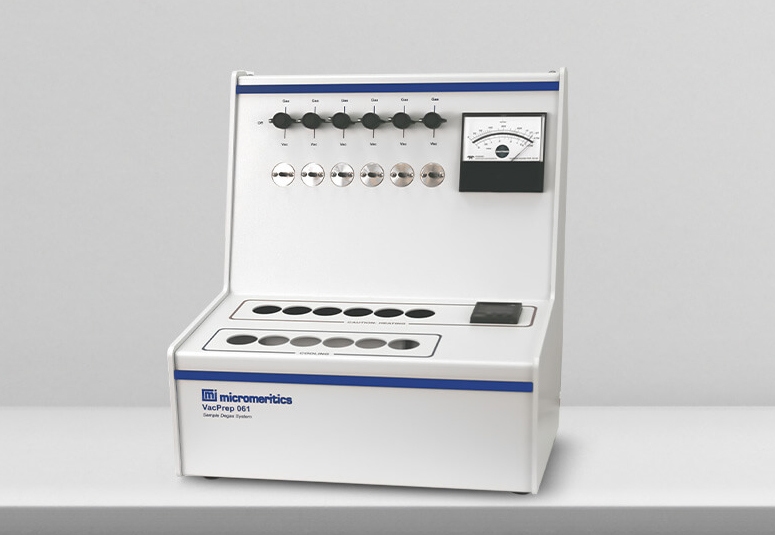
The Micromeritics VacPrep features six degassing stations, and a choice of vacuum or gas flow preparation on each of the six stations.
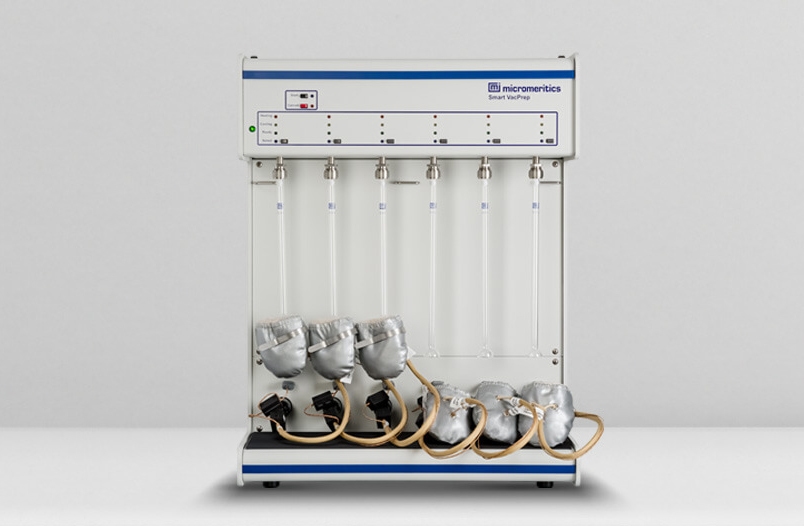
The Micromeritics Smart VacPrep is an advanced six-port system that utilizes a vacuum to prepare samples by heating and evacuation.
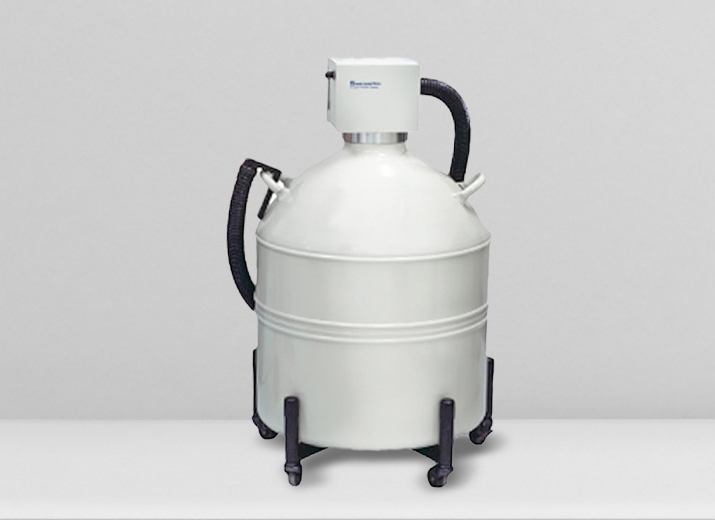
Specifically developed for conveniently filling Dewars for gas adsorption instruments, but also can be used for other cryogen applications.
The intuitive Micromeritics MicroActive control software for the TriStar II Plus streamlines isotherm data evaluation, reducing the time required to obtain surface area and porosity results. It is not necessary to generate reports to view results.
Users can effortlessly generate and adjust calculations, such as the BET surface area transform plot, while selection bars enable quick and easy data point selection. As a result, calculation summaries update instantly, and data ranges can be further refined within the calculation window(s).
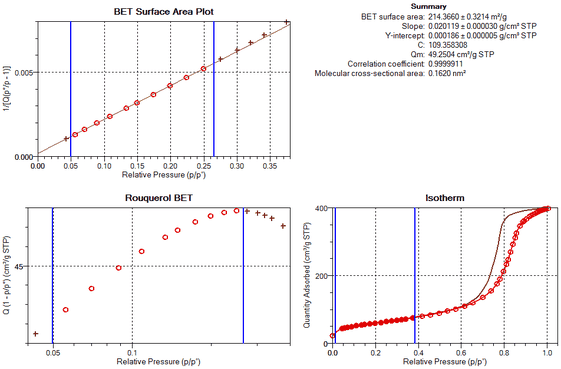
MicroActive software for the Micromeritics TriStar II Plus also features a powerful utility that allows users to overlay mercury porosimetry pore size distributions with those derived from gas adsorption isotherms.
This import function allows users to rapidly view micropore, mesopore, and macropore distributions in one easy-to-use application
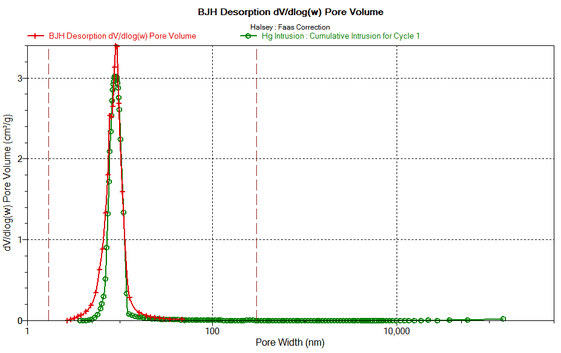
The Advanced NLDFT model allows the user to combine the information gathered from nitrogen and carbon dioxide isotherms to deliver a full pore size distribution on materials (such as carbon slit pores) where pores of molecular sizes are present.
The range of pore size analysis in this method is extended to smaller pore sizes compared to the standard nitrogen analysis. CO2 can access small micropores that are not accessible to N2 at cryogenic temperatures due to size restrictions, connectivity problems, or extremely slow diffusion.
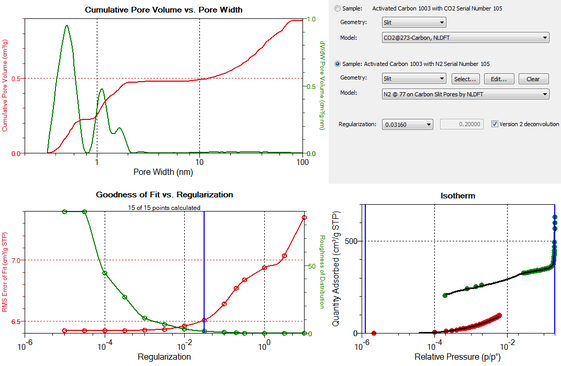
Version number:
Please contact support for the latest software version.
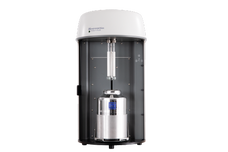
Rapid analysis and true parallel operation. Reporting confidence. Take your BET surface area analysis to the next level.